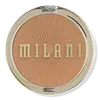What's inside
What's inside
 Key Ingredients
Key Ingredients

 Benefits
Benefits

 Concerns
Concerns

 Ingredients Side-by-side
Ingredients Side-by-side

Talc
AbrasiveZea Mays Starch
AbsorbentZinc Stearate
Cosmetic ColorantDimethicone
EmollientMica
Cosmetic ColorantPentaerythrityl Tetraisostearate
EmollientOctyldodecyl Stearoyl Stearate
EmollientCaprylyl Glycol
EmollientSilica
AbrasiveHdi/Trimethylol Hexyllactone Crosspolymer
Nylon-12
Hexylene Glycol
EmulsifyingArgania Spinosa Kernel Oil
EmollientDiisostearyl Malate
EmollientLauroyl Lysine
Skin ConditioningCocos Nucifera Oil
MaskingGardenia Taitensis Flower
Skin ConditioningTocopherol
AntioxidantPhenoxyethanol
PreservativePotassium Sorbate
PreservativeAroma
CI 15850
Cosmetic ColorantCI 19140
Cosmetic ColorantIron Oxides
CI 77742
Cosmetic ColorantCI 77891
Cosmetic ColorantTalc, Zea Mays Starch, Zinc Stearate, Dimethicone, Mica, Pentaerythrityl Tetraisostearate, Octyldodecyl Stearoyl Stearate, Caprylyl Glycol, Silica, Hdi/Trimethylol Hexyllactone Crosspolymer, Nylon-12, Hexylene Glycol, Argania Spinosa Kernel Oil, Diisostearyl Malate, Lauroyl Lysine, Cocos Nucifera Oil, Gardenia Taitensis Flower, Tocopherol, Phenoxyethanol, Potassium Sorbate, Aroma, CI 15850, CI 19140, Iron Oxides, CI 77742, CI 77891
Mica
Cosmetic ColorantSynthetic Fluorphlogopite
Talc
AbrasiveMagnesium Stearate
Cosmetic ColorantSilica
AbrasiveCalcium Sodium Borosilicate
Ethylhexyl Palmitate
EmollientCaprylic/Capric Triglyceride
MaskingDimethicone
EmollientMagnesium Myristate
Hydrogenated Polyisobutene
EmollientTocopheryl Acetate
AntioxidantEthylhexylglycerin
Skin ConditioningTin Oxide
AbrasivePhenoxyethanol
PreservativeCI 19140
Cosmetic ColorantCI 77491
Cosmetic ColorantCI 77492
Cosmetic ColorantCI 77499
Cosmetic ColorantCI 77891
Cosmetic ColorantMica, Synthetic Fluorphlogopite, Talc, Magnesium Stearate, Silica, Calcium Sodium Borosilicate, Ethylhexyl Palmitate, Caprylic/Capric Triglyceride, Dimethicone, Magnesium Myristate, Hydrogenated Polyisobutene, Tocopheryl Acetate, Ethylhexylglycerin, Tin Oxide, Phenoxyethanol, CI 19140, CI 77491, CI 77492, CI 77499, CI 77891
Ingredients Explained
These ingredients are found in both products.
Ingredients higher up in an ingredient list are typically present in a larger amount.
CI 19140 is also known as Tartrazine. Tartrazine is a synthetic dye used in cosmetics, foods, and medicine to add a yellow color.
Tartrazine is created from petroleum and is water-soluble.
Some people may experience allergies from this dye, especially asthmatics and those with an aspirin intolerance.
Learn more about CI 19140Ci 77891 is a white pigment from Titanium dioxide. It is naturally found in minerals such as rutile and ilmenite.
It's main function is to add a white color to cosmetics. It can also be mixed with other colors to create different shades.
Ci 77891 is commonly found in sunscreens due to its ability to block UV rays.
Learn more about CI 77891Dimethicone is a type of synthetic silicone created from natural materials such as quartz.
What it does:
Dimethicone comes in different viscosities:
Depending on the viscosity, dimethicone has different properties.
Ingredients lists don't always show which type is used, so we recommend reaching out to the brand if you have questions about the viscosity.
This ingredient is unlikely to cause irritation because it does not get absorbed into skin. However, people with silicone allergies should be careful about using this ingredient.
Note: Dimethicone may contribute to pilling. This is because it is not oil or water soluble, so pilling may occur when layered with products. When mixed with heavy oils in a formula, the outcome is also quite greasy.
Learn more about DimethiconeMica is a naturally occurring mineral used to add shimmer and color in cosmetics. It can also help improve the texture of a product or give it an opaque, white/silver color.
Serecite is the name for very fine but ragged grains of mica.
This ingredient is often coated with metal oxides like titanium dioxide. Trace amounts of heavy metals may be found in mica, but these metals are not harmful in our personal products.
Mica has been used since prehistoric times throughout the world. Ancient Egyptian, Indian, Greek, Roman, Aztec, and Chinese civilizations have used mica.
Learn more about MicaPhenoxyethanol is a preservative that has germicide, antimicrobial, and aromatic properties. Studies show that phenoxyethanol can prevent microbial growth. By itself, it has a scent that is similar to that of a rose.
It's often used in formulations along with Caprylyl Glycol to preserve the shelf life of products.
Silica, also known as silicon dioxide, is a naturally occurring mineral. It is used as a fine, spherical, and porous powder in cosmetics.
Though it has exfoliant properties, the function of silica varies depending on the product.
The unique structure of silica enhances the spreadability and adds smoothness, making it a great texture enhancer.
It is also used as an active carrier, emulsifier, and mattifier due to its ability to absorb excess oil.
In some products, tiny microneedles called spicules are made from silica or hydrolyzed sponge. When you rub them in, they lightly polish away dead skin layers and enhance the penetration of active ingredients.
Learn more about SilicaTalc is a clay mineral. It helps absorb moisture and improve the texture of products. Like other types of clay, Talc can have a slight exfoliating effect on skin. Talc can be added to increase the volume of products.
Some Baby powders are made by combining talc with corn starch. The word "talc" comes from Latin and originates from Arabic. Talc is a mineral commonly found throughout the world.
If you have any concerns about using talc, we recommend checking out the FDA's official page.
Learn more about Talc